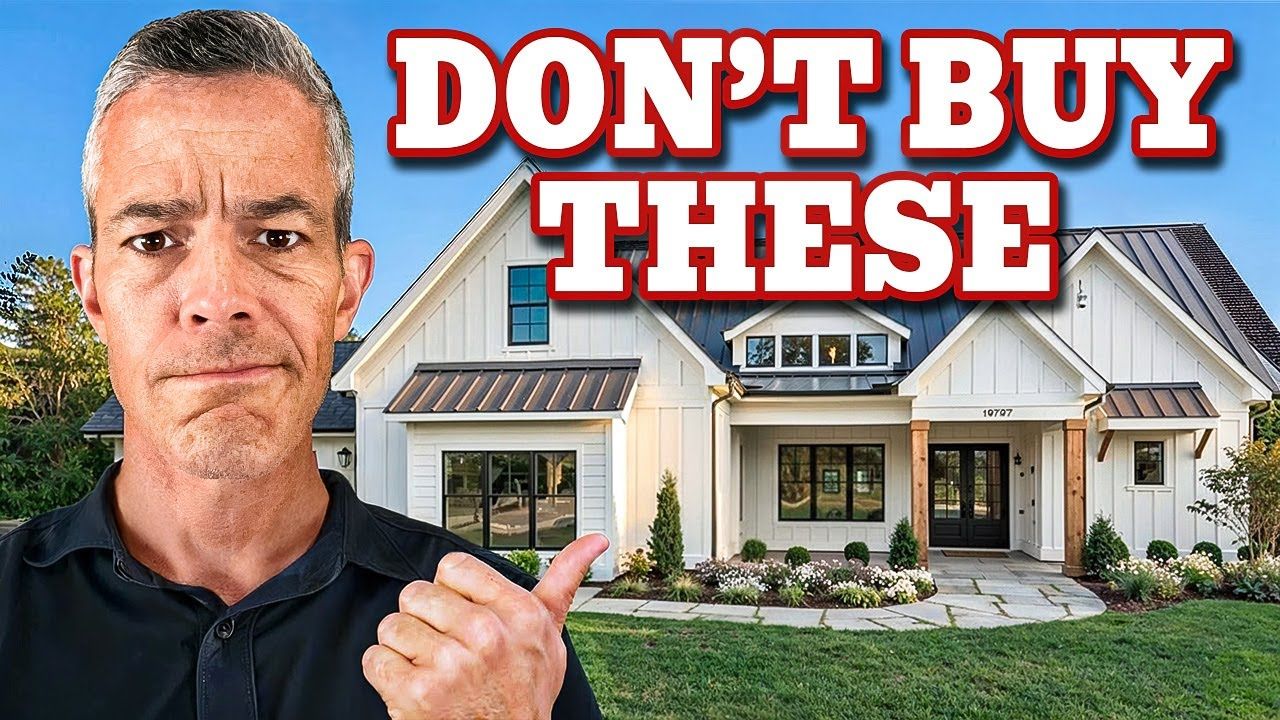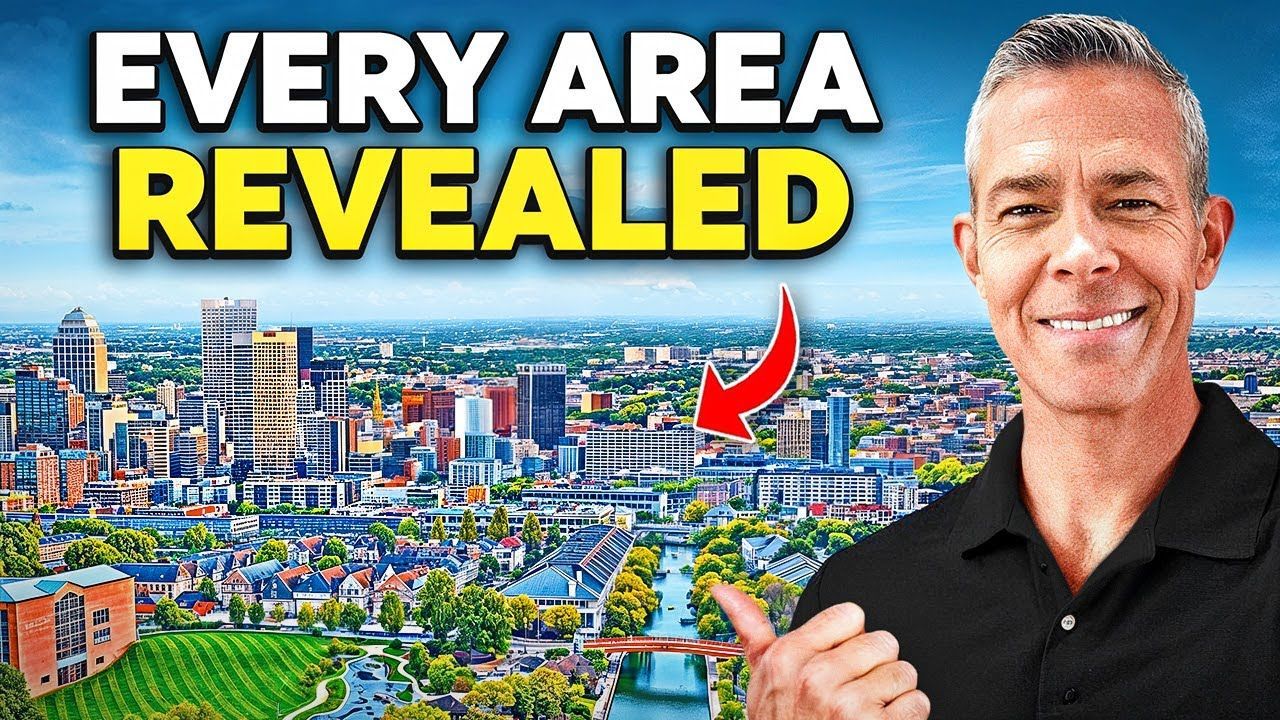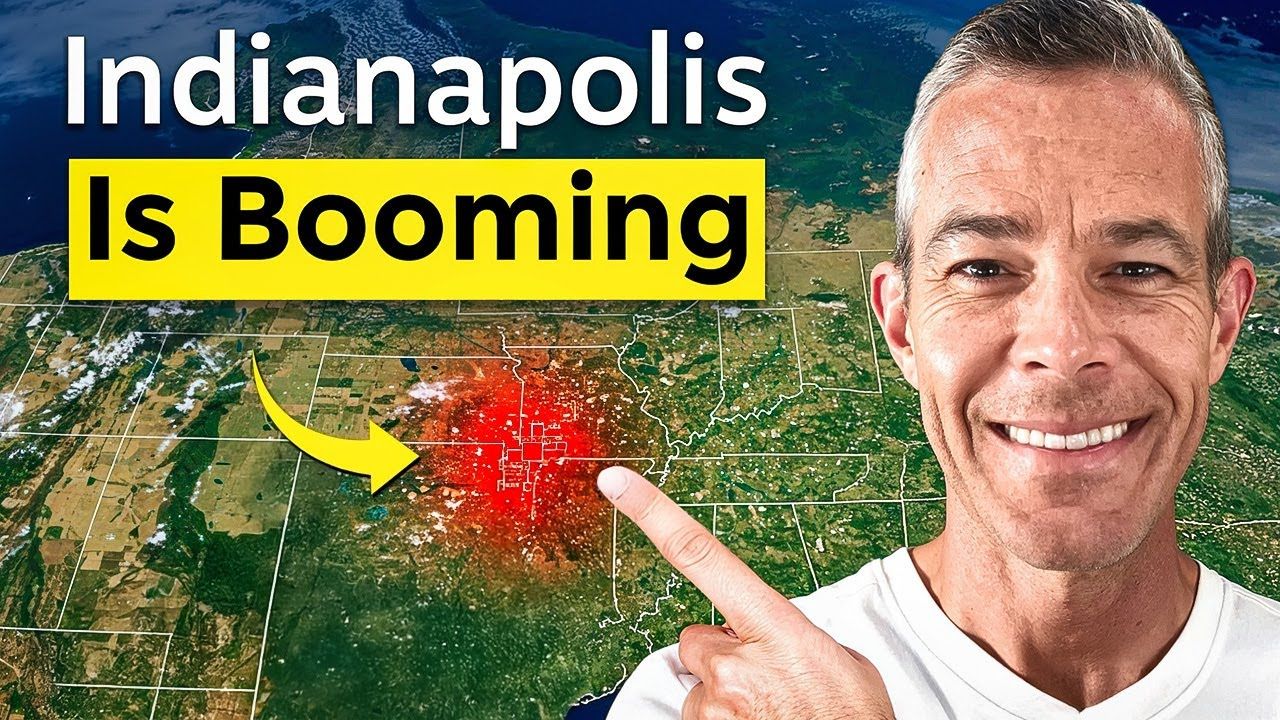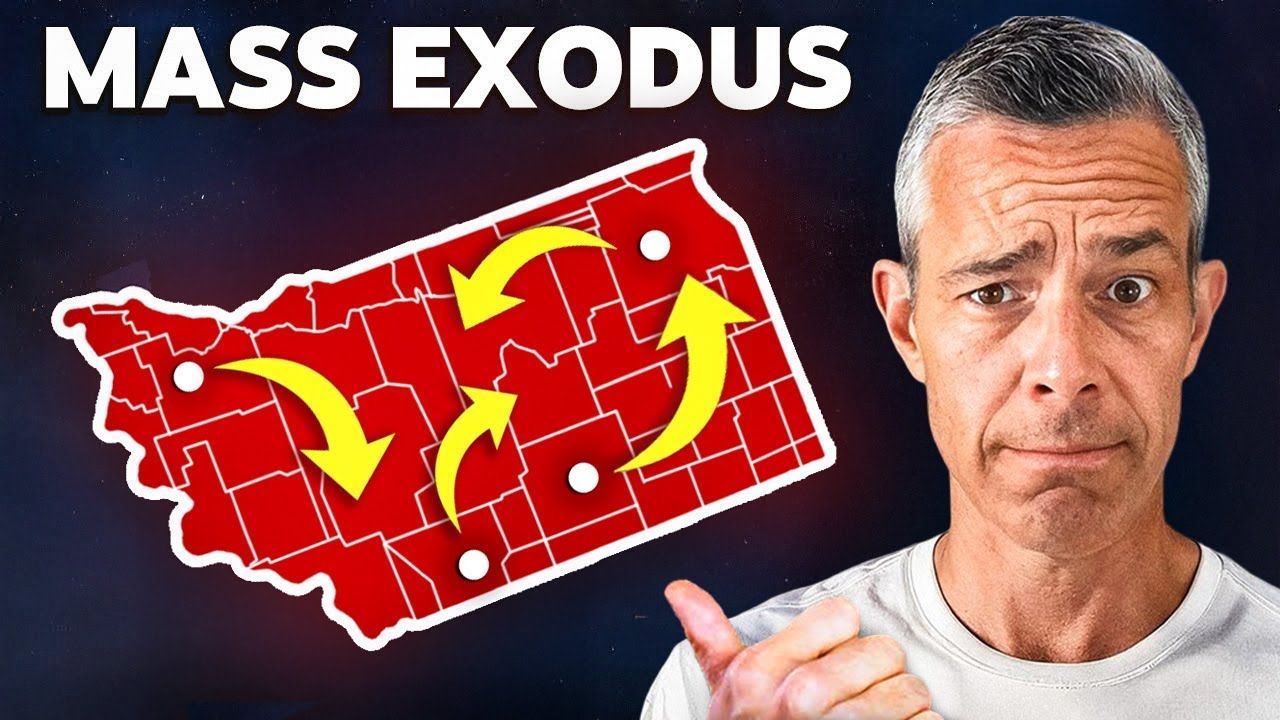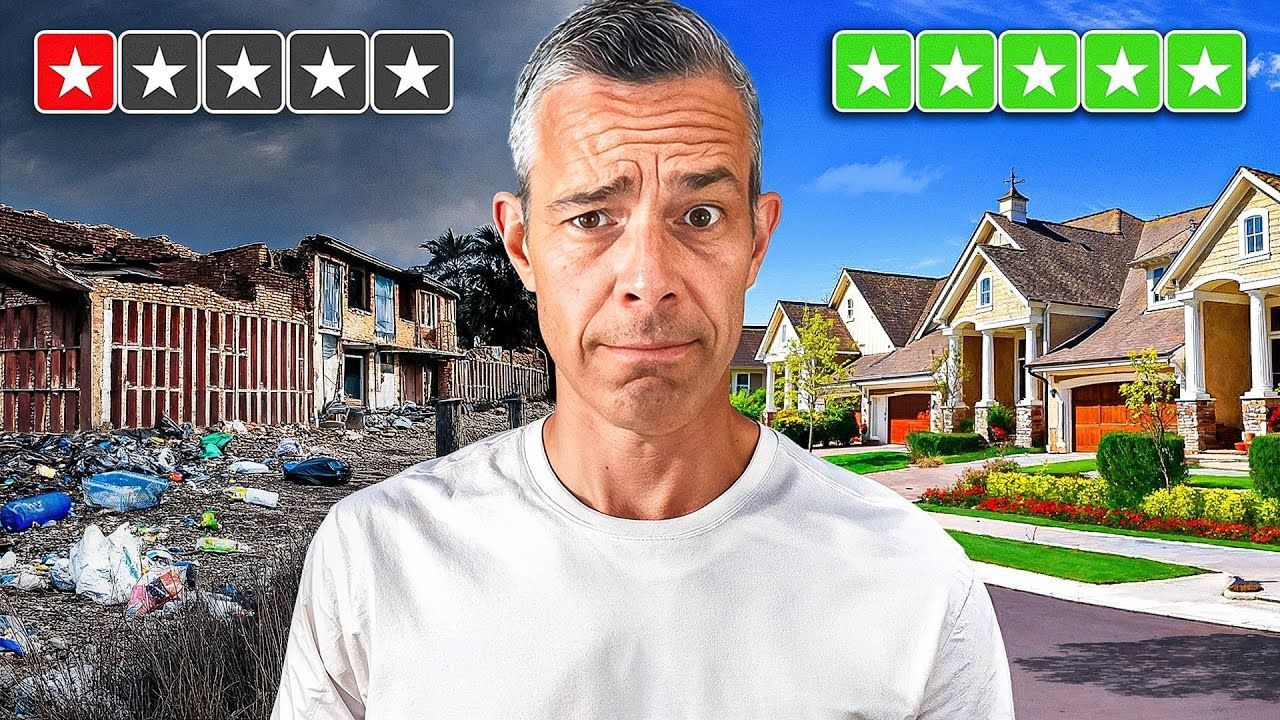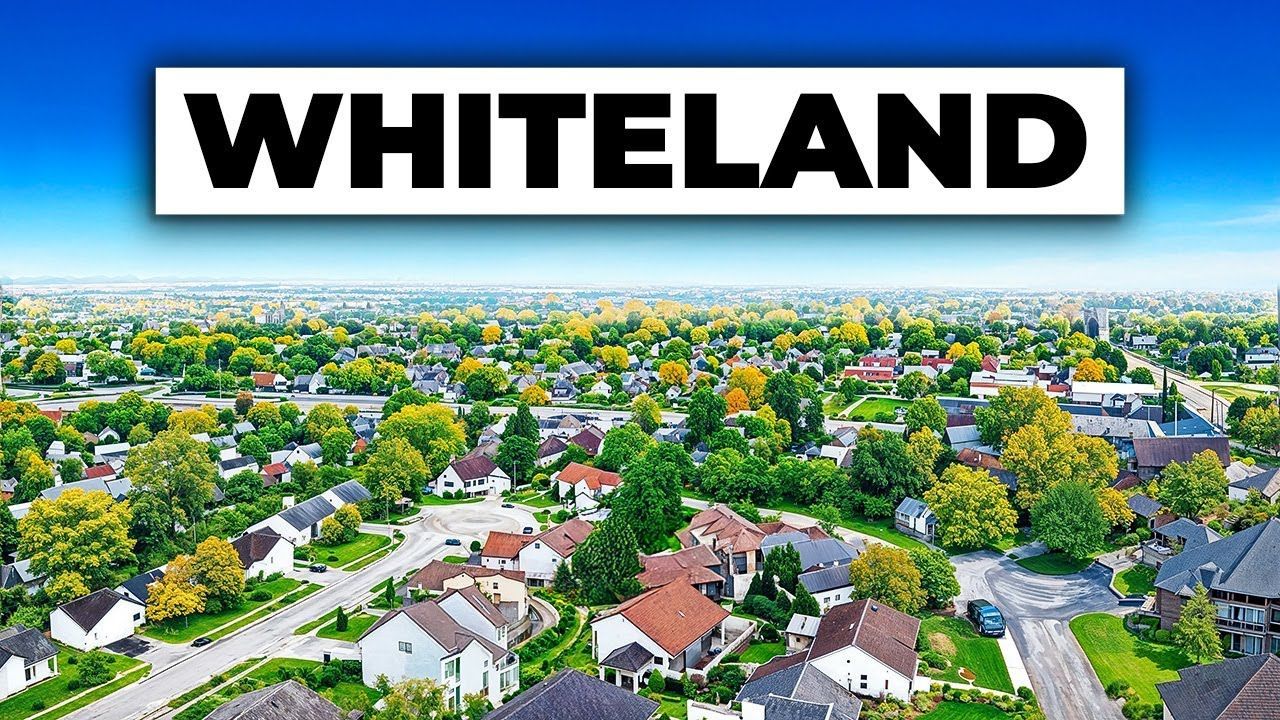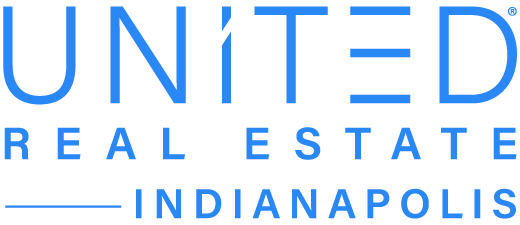Indianapolis Suburbs People are LEAVING!
In this post I’m walking you through specific Indianapolis suburbs where demand is starting to soften and the local market is changing. If you’re researching Indianapolis suburbs because you’re moving here, thinking about selling, or hunting for a deal, this breakdown will give you practical, street-level insight on where things are shifting and why.
Before I dive in, here’s the grading system I use throughout this article: a perfect 25 out of 25 means the suburb is still absolutely slamming—very hot, high demand, and low inventory. Scores lower than 25 indicate cooling; the lower the score, the softer demand has become. I’ll cover five suburbs, explain the local dynamics, and share what buyers and sellers should watch for in each micro market.
Table of Contents
- Suburb #5 — Westfield (Score: 16/25)
- Suburb #4 — McCordsville (Score: 17/25)
- Suburb #3 — Avon (Score: 18/25)
- Suburb #2 — Whitestown (Score: 18/25)
- Suburb #1 — Greenwood, south of Main Street (Score: 19/25)
- How to use this information — practical next steps for buyers and sellers
- Micro markets matter: a short primer
- FAQs About Indianapolis Suburbs People Are Leaving
- Final thoughts — timing, strategy, and next steps
Suburb #5 — Westfield (Score: 16/25)
Westfield has been one of the fastest-growing suburbs in the Indianapolis metro over the last 20 years. It’s a desirable place—the schools, amenities, and new neighborhoods all contribute to its appeal. But here’s the nuance: parts of Westfield, especially the fringe areas where growth pushed outward, are starting to show signs of saturation.
Two trends to note in Westfield right now:
- New-build inventory is up roughly 20% compared to the last year or two.
- Builders are offering incentives—structural upgrades, closing-cost contributions, and other perks that make new homes more attractive.
That combination—more houses on the market and more incentives—creates a slightly more favorable environment for buyers. Sellers in those fringe pockets are feeling the pressure because they’re competing with brand new options that come loaded with everything today’s buyers want.
What do I mean by “fringe Westfield”? Drive far enough north and west and your phone might even say the address is Sheridan. Over time new build communities have blurred the lines between Westfield and neighboring towns. The GPS confusion is the visual cue for what’s happening on the ground: expansion and blending of micro markets.
If you’re a buyer looking at Westfield, this is good news: you have negotiating leverage, especially on newer inventory that’s been sitting. If you’re a seller in an older fringe neighborhood, be realistic about how your house compares to a freshly built spec home two streets over. Pricing and presentation need to account for that immediate competition.
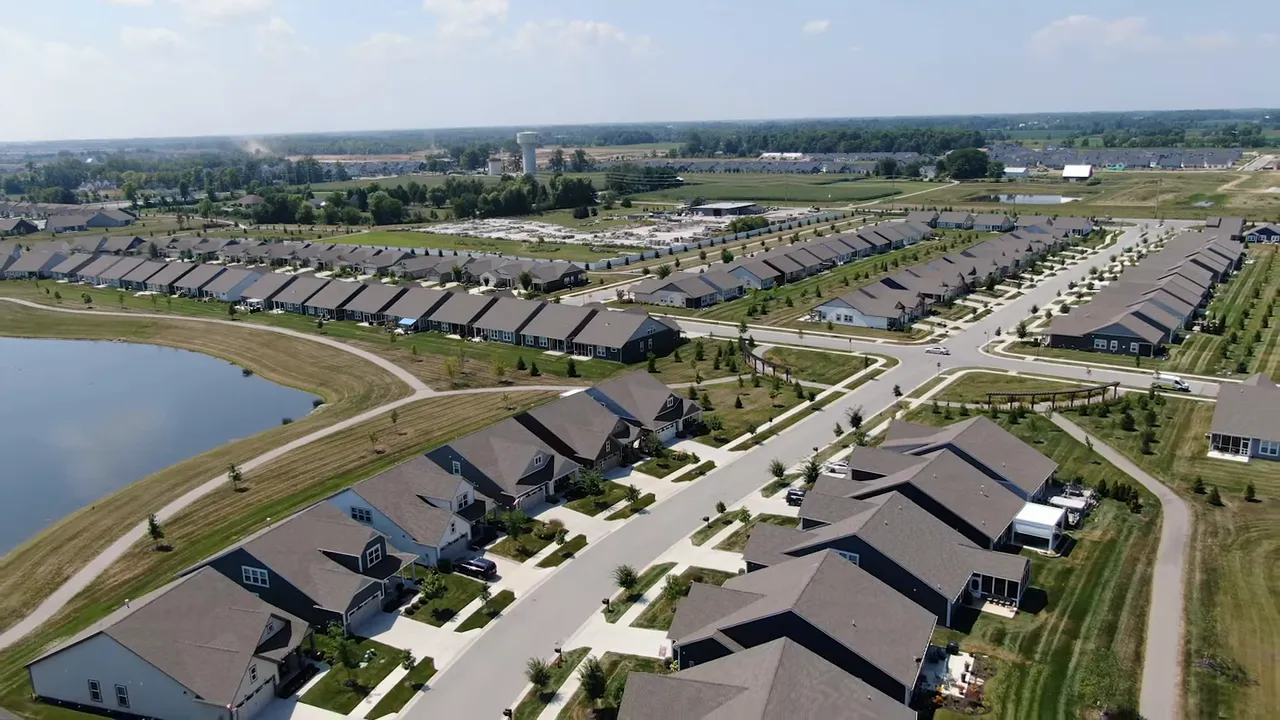
Buyer strategy for Westfield
- Look for builder incentives and compare them dollar-for-dollar to resale home upgrades.
- Inspect micro locations—two streets can mean very different competition and resale outlooks.
- If you want an established neighborhood, seek out pockets closer to town center rather than the newest fringe subdivisions.
Seller strategy for Westfield
- Recognize that buyers will compare your home to new builds—consider modest renovations or concessions to stay competitive.
- Price aggressively out of the gate to generate activity; multiple showings early can support a stronger sale price.
Suburb #4 — McCordsville (Score: 17/25)
McCordsville exploded in the last several years, especially in the run-up to and immediately after 2020. If you wanted new construction, you likely looked at McCordsville first. Today, however, the market has moderated.
Key points about McCordsville:
- New construction is still present but growth has slowed—the rise in available inventory is moderating.
- Builders are offering negotiable prices, structural upgrades, and incentives on financing.
- Spec homes (move-in ready models without a buyer) sometimes sit for much longer than they used to; it’s not uncommon to see a spec home on the market for around 100 days.
One important dynamic in McCordsville is the proximity of older established subdivisions to brand-new neighborhoods. Buyers love the area, but when they compare a two-decade-old home to a brand-new model two minutes away, the new build usually wins unless the older home has been thoughtfully updated and priced accordingly.
On the resale side, average days on market have risen. Where sellers used to expect immediate offers, some homes are now sitting 30, 40, even up to 50 days depending on price point and condition. That’s a significant mental shift for sellers who haven’t adjusted their expectations since the peak years.
Buyer strategy for McCordsville
- Use the slowdown to your advantage: negotiate upgrades, price, and mortgage-rate buy-downs.
- Compare new-build incentives to what it would cost to renovate an older home you like.
Seller strategy for McCordsville
- Adjust expectations on timing and price—if you price like it’s still a frenzied market, your home may linger.
- Invest in small, impactful renovations (paint, updated fixtures, minor kitchen or bath refreshes) to make your home feel newer.
Suburb #3 — Avon (Score: 18/25)
Avon remains a strong community with great schools and a solid community feel. The caveat: neighborhoods built in the early 2000s (around 2001–2002) are starting to show their age—and that’s created pressure in that specific vintage market.
Here’s what we’re seeing:
- Inventory for homes built around 20–25 years ago is up roughly 25%.
- Price reductions in this age band have increased about 50% year-over-year. That doesn’t mean prices are plunging 50%, but rather a lot more listings are experiencing reductions.
- Buyers increasingly want turnkey, modern homes—especially with more remote work options. If sellers offer dated finishes, they’re less competitive.
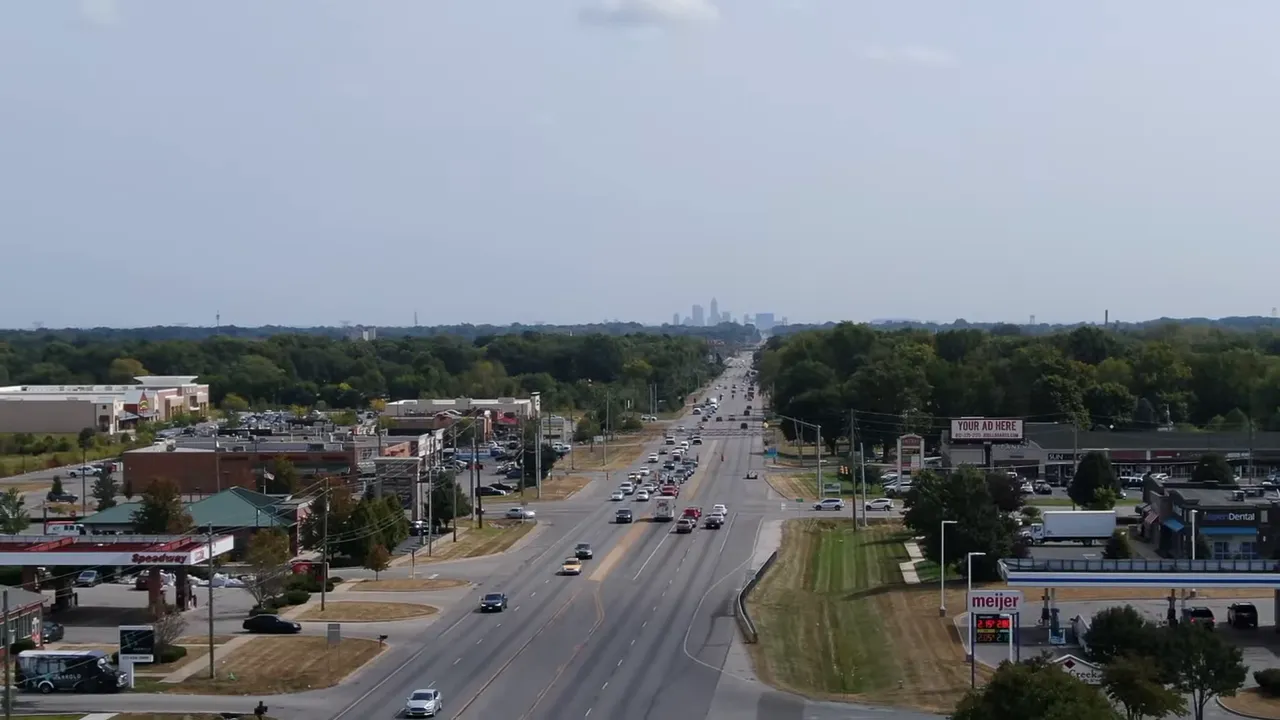
Meanwhile, new construction in Avon is delivering exactly what modern buyers want: move-in ready, modern design, and minimal renovation required. Combine that with builder incentives and you can see why older but otherwise solid homes are being compared unfavorably in buyer eyes.
A trend worth watching: many buyers are commuting less, so the home itself carries more weight. Buyers prioritize layout, finishes, and functionality over being a few minutes closer to an office. That has magnified demand for new construction and well-updated resale homes.
Buyer strategy for Avon
- Favor move-in ready properties unless you’re comfortable doing renovations.
- If interested in older homes, calculate renovation costs and timelines to avoid surprises.
Seller strategy for Avon
- Refresh key spaces (kitchen, flooring, paint) to achieve a modern look without major expense.
- Be prepared to adjust price if your home is directly competing with new builds in the same micro market.
Suburb #2 — Whitestown (Score: 18/25)
Whitestown is one of the top two or three fastest-growing places around the Indianapolis metro. Growth means lots of new construction—and with that comes the growing pains when buyer demand softens.
What to watch in Whitestown:
- Spec homes and new builds are beginning to sit longer, and builders are dropping prices or offering sizable incentives.
- Resale homes are competing with fresh new inventory and are therefore seeing longer days on market.
- The market has been through a multi-year climb—growth is not linear. We’re in a pause or a flattening period after a long upward run.
Remember: explosive growth has peaks and valleys. Whitestown isn’t “in trouble.” Instead it’s experiencing a normalization after years of rapid expansion. That normalization creates opportunities—especially for buyers willing to wait for the right incentive or builder program.
Buyer strategy for Whitestown
- Shop builder programs—look for rate buy-downs and closing-cost credits.
- Consider timing: you might find a move-in ready spec with included upgrades at a better price than a resale that needs work.
Seller strategy for Whitestown
- If selling a resale home, highlight differentiators (lot size, mature landscaping, upgrades) that raw new builds don’t yet provide.
- Price competitively and stage for current buyer tastes; buyers have more choices.
Suburb #1 — Greenwood, south of Main Street (Score: 19/25)
Greenwood—particularly south of Main Street and the southeastern edges—is still strong, but it’s showing the earliest signs of hitting the top of the market peak and leveling off.
Here’s what the data and street-level signs show:
- Inventory in the southeastern Greenwood pockets is up roughly 30% compared to recent years.
- Price growth that was steady for several years has flattened and, in a few instances, is showing slight reversals.
- Buyer interest is shifting slightly further south—into New Whiteland, Whiteland, and Franklin—where the builder boom has been heavier.
A critical point about Greenwood is micro-location sensitivity. Greenwood as a whole is a large, diverse market; a street or two can make a huge difference in resale performance. Newer neighborhoods to the south have attracted a lot of building activity, and sometimes supply has outpaced demand in those very new pockets.
Buyers have choices: some are looking north into older, more established Greenwood pockets for perceived value; others are chasing the newest communities further south. That split affects how individual neighborhoods perform.
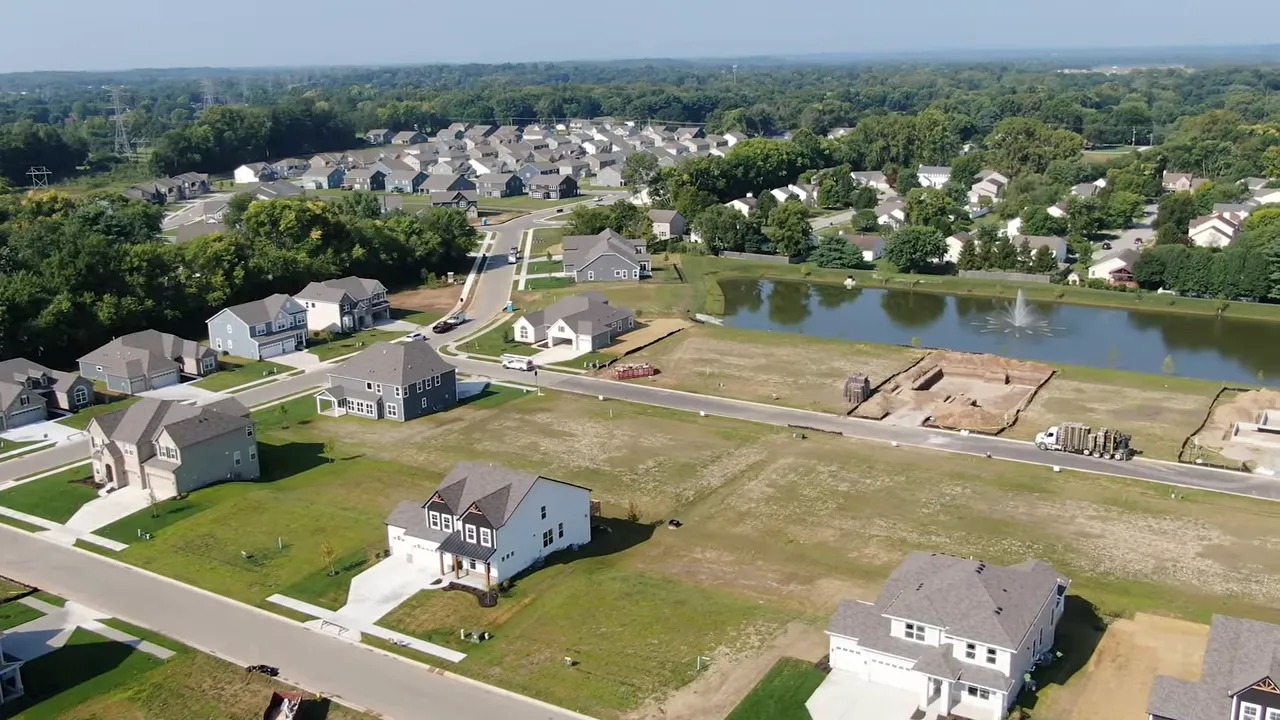
Buyer strategy for Greenwood
- Evaluate micro-location carefully—identify streets with stronger appreciation histories.
- When considering new construction, compare incentives and effective cost versus buying a comparable resale.
Seller strategy for Greenwood
- Market your home’s unique strengths—lot position, mature landscaping, community amenities that new builds lack.
- Be mindful of timing; if you list when local builder inventory is heavy, you’ll need a sharper strategy to stand out.
How to use this information — practical next steps for buyers and sellers
The Indianapolis suburbs landscape is changing in nuanced ways. Here are specific, actionable steps depending on whether you’re buying or selling:
For buyers
- Understand builder incentives: Many builders are now willing to add structural upgrades, give closing-cost credits, or buy your rate down. Always compare the total package cost—not just the sticker price. The true cost includes incentives, upgrades, and financing impacts.
- Check days on market and inventory trends in the micro market you like. A suburb-level metric can mask big differences between subdivisions or streets.
- Factor in renovation timelines. If you’re comparing an older home to a new build, estimate how long and costly it will be to reach the same finishes.
- Negotiate with a strategy: ask for upgrades, reduce price, or request seller concessions. The market has bought back leverage for buyers in many Indianapolis suburbs.
For sellers
- Match your home to buyer expectations. If buyers want modern finishes and your home looks dated, consider cost-effective updates (paint, hardware, lighting).
- Price for today’s market. Many sellers still expect pre-2022 pace and pricing. If your home’s competition includes brand-new houses with incentives, position your price and marketing accordingly.
- Highlight what new builds can’t offer: mature trees, established community feel, larger lots, or proximity to specific amenities.
- Prepare for longer marketing times in the specific suburbs where inventory has risen. A patient, staged, well-priced approach wins more often than a stubborn list price.
Micro markets matter: a short primer
One of the most important takeaways when navigating Indianapolis suburbs is the power of micro markets. “Greenwood” or “Westfield” aren’t single homogeneous markets; they’re composed of dozens of micro markets that can perform very differently.
Micro market drivers include:
- Proximity to schools and amenities
- Age of construction and the style of homes
- Lot size and street position
- Immediate competition—are there new builds two blocks away?
- Local infrastructure improvements (new road access, retail, parks)
Two streets can be the difference between a home selling in a week and a home taking months. When I work with clients I dig into those micro differences so they get a property aligned with their investment and lifestyle goals.
FAQs About Indianapolis Suburbs People Are Leaving
Are people really leaving these Indianapolis suburbs?
“Leaving” is a strong word. What we’re seeing is a shift—certain pockets are cooling from a hyped pace to a more balanced market. It’s less about mass exodus and more about normalization after years of rapid appreciation and intense demand.
Which Indianapolis suburbs still have strong demand?
Demand strength varies by micro market. Town centers with established amenities and top school zones remain attractive. Neighborhoods with low inventory and limited new build competition still perform well. Conversely, fringe new-build pockets are the places where you’ll see more softness.
If I want to buy, should I prefer a new build or a resale?
It depends on your priorities. New builds offer turnkey finishes and warranty coverage but may come with a premium—unless the builder is offering incentives. Resales can offer larger lots or established landscaping and sometimes better value—but factor renovation cost and timing.
Are price reductions a sign of a crash?
Not necessarily. Price reductions can indicate more competition or unrealistic initial pricing. A healthy, balanced market includes occasional price adjustments as buyers gain leverage.
How do I find micro market data for a specific neighborhood?
Look at neighborhood-level days on market, price-per-square-foot trends, and the ratio of new construction to resale inventory. Working with a local agent who tracks these micro trends—like I do daily—gives you a clearer picture than county- or city-wide statistics.
Final thoughts — timing, strategy, and next steps
The Indianapolis suburbs are not collapsing—they’re recalibrating. After a long stretch of explosive growth, we’re seeing inventory normalize, builders adjust offers, and buyers become more selective. That creates meaningful opportunities and requires thoughtful strategy.
If you’re moving to Indianapolis suburbs in 2025 or thinking about selling a home here, the most important step is matching the right neighborhood to your goals and timing your move to align with local demand. Micro location and timing are as important as ever. Whether you’re seeking a family-friendly suburb with top schools or looking for the best value with new construction incentives, now is the time to dig into the details.
If you want help evaluating specific Indianapolis suburbs, analyzing micro markets, or negotiating with builders, reach out. I walk people through these decisions every week—finding the right neighborhood and timing that fit their goals and lifestyle.
Thanks for reading. If you want neighborhood-specific reports or help finding homes across Indianapolis suburbs, contact my team at 317-932-8620 and we’ll walk you through the very best options for your situation.
jason compton
A former teacher turned full-time real estate agent serving Greater Indianapolis. I help buyers, sellers, and relocation clients make informed moves—especially those coming from out of state. From neighborhood insights to home tours, my goal is to simplify the process and help you feel confident in every step.
Stay Informed
Insights, Tips & Life in Indianapolis
Your go-to resource for all things real estate and Indy living. Whether you're buying, selling, relocating, or just curious about the local market, our blog is packed with helpful articles, expert advice, and community highlights to keep you informed and inspired.

